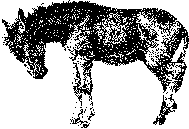I cannot hold my peace, John Keats;
There never was a spring like this;
It is an echo, that repeats
My last year's song and next year's bliss.
I know, in spite of all men say
Of Beauty, you have felt her most.
Yea, even in your grave her way
Is laid. Poor, troubled, lyric ghost,
Spring never was so fair and dear
As Beauty makes her seem this year.
I cannot hold my peace, John Keats,
I am as helpless in the toil
Of Spring as any lamb that bleats
To feel the solid earth recoil
Beneath his puny legs. Spring beats
her tocsin call to those who love her,
And lo! the dogwood petals cover
Her breast with drifts of snow, and sleek
White gulls fly screaming to her, and hover
About her shoulders, and kiss her cheek,
While white and purple lilacs muster
A strength that bears them to a cluster
Of color and odor; for her sake
All things that slept are now awake.
And you and I, shall we lie still,
John Keats, while Beauty summons us?
Somehow I feel your sensitive will
Is pulsing up some tremulous
Sap road of a maple tree, whose leaves
Grow music as they grow, since your
Wild voice is in them, a harp that grieves
For life that opens death's dark door.
Though dust, your fingers still can push
The Vision Splendid to a birth,
Though now they work as grass in the hush
Of the night on the broad sweet page of the earth.
"John Keats is dead," they say, but I
Who hear your full insistent cry
In bud and blossom, leaf and tree,
Know John Keats still writes poetry.
And while my head is earthward bowed
To read new life sprung from your shroud,
Folks seeing me must think it strange
That merely spring should so derange
My mind. They do not know that you,
John Keats, keep revel with me, too.
From On These I Stand: An Anthology of the Best Poems of Countee Cullen
(May 30, 1903–January 9, 1946)














